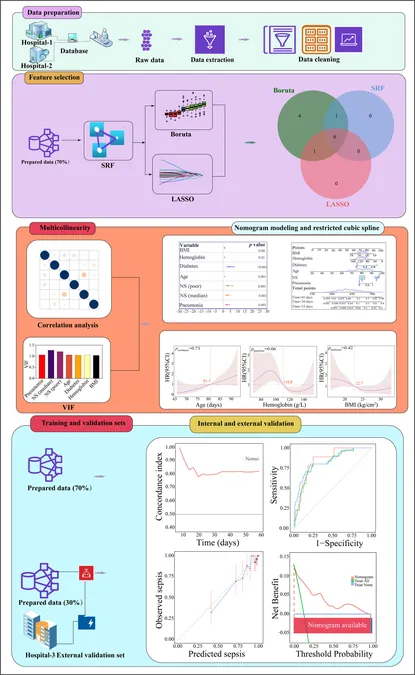
Shockingly High Levels of Nanoplastics Found Polluting the North Atlantic!
2025-07-09
Author: Benjamin
Oceans Choked by Plastic Waste
The oceans, our planet's life force, are drowning in plastic waste, and the impact on marine life is staggering. From entanglement in large debris to the ingestion of smaller particles, wildlife is paying a hefty price. Ingested plastic can wreak havoc, causing blockages and injuries to the gastrointestinal tract. While many micro and smaller particles are expelled from the body, some sneak into the bloodstream, posing further health risks.
Nanoplastic: The Hidden Menace
But just how much nanoplastic—those annoyingly tiny particles smaller than 1 micron—is lurking in our oceans? Until recently, researchers have largely focused on larger plastic debris, leaving a significant knowledge gap regarding nanoplastic pollution.
Groundbreaking Research Expedition Uncovers Data
In a groundbreaking study conducted during a 2020 expedition with the RV Pelagia, scientists from the UFZ and Utrecht University made staggering discoveries about nanoplastic prevalence. The team traveled from the European continental shelf straight to the North Atlantic Gyre, collecting water samples at various depths—10 meters, 1,000 meters, and close to the seabed.
Revolutionary Detection Method Pinpoints Nanoplastics
Using cutting-edge technology, Dr. Dušan Materić and his team employed a high-resolution proton transfer reaction mass spectrometer (PTR-MS) to analyze the tiny plastic particles. By burning these particles, they could identify their chemical signatures. This innovative technique led to some shocking findings.
Nanoplastics Everywhere—A Global Wake-Up Call!
Nanoplastics were found at all 12 measurement points, indicating they are omnipresent in alarming quantities. "Their presence is so widespread that we can no longer ignore them as ecological factors," warns Materić.
PET, PS, and PVC: The Most Common Culprits
The most frequently observed nanoparticles included polyethylene terephthalate (PET), polystyrene (PS), and polyvinyl chloride (PVC)—the very materials found in single-use plastics, bottles, and food containers. Strikingly, these pollutants were detected most prominently near the ocean surface, suggesting a dire link to atmospheric distribution and river runoff.
Surprising Findings and Future Implications
While the intermediate layers showed a domination of PET, the deepest waters also revealed stubborn traces of nanoplastics, potentially stemming from synthetic clothing and unknown sources. What mystified the researchers was the absence of commonly used polyethylene (PE) and polypropylene (PP) particles—leading to concerns about undetected forms of pollution.
A Mind-Boggling Estimate of Nanoplastic Pollution!
Based on their concentration measurements, a staggering 27 million metric tons of nanoplastics—comprising PET, PS, and PVC—are believed to be stored in the top 200 meters of the North Atlantic. This figure is alarmingly close to estimates for macro- and microplastics combined!
A New Chapter in Plastic Pollution Research
Dr. Materić emphasizes a significant truth: "Only recently, there was debate on the existence of nanoplastics. Our research has unveiled that the mass of nanoplastics is comparable to that of larger plastic debris in this ocean system, demanding urgent attention and revised assessments of maritime plastic pollution."
Conclusion: Time for Action!
This revolutionary study serves as a stark reminder that the pollution crisis is more complex than ever imagined. As scientists unravel the mysteries of nanoplastic, the call for action against ocean pollution has never been more urgent.









 Brasil (PT)
Brasil (PT)
 Canada (EN)
Canada (EN)
 Chile (ES)
Chile (ES)
 Česko (CS)
Česko (CS)
 대한민국 (KO)
대한민국 (KO)
 España (ES)
España (ES)
 France (FR)
France (FR)
 Hong Kong (EN)
Hong Kong (EN)
 Italia (IT)
Italia (IT)
 日本 (JA)
日本 (JA)
 Magyarország (HU)
Magyarország (HU)
 Norge (NO)
Norge (NO)
 Polska (PL)
Polska (PL)
 Schweiz (DE)
Schweiz (DE)
 Singapore (EN)
Singapore (EN)
 Sverige (SV)
Sverige (SV)
 Suomi (FI)
Suomi (FI)
 Türkiye (TR)
Türkiye (TR)
 الإمارات العربية المتحدة (AR)
الإمارات العربية المتحدة (AR)